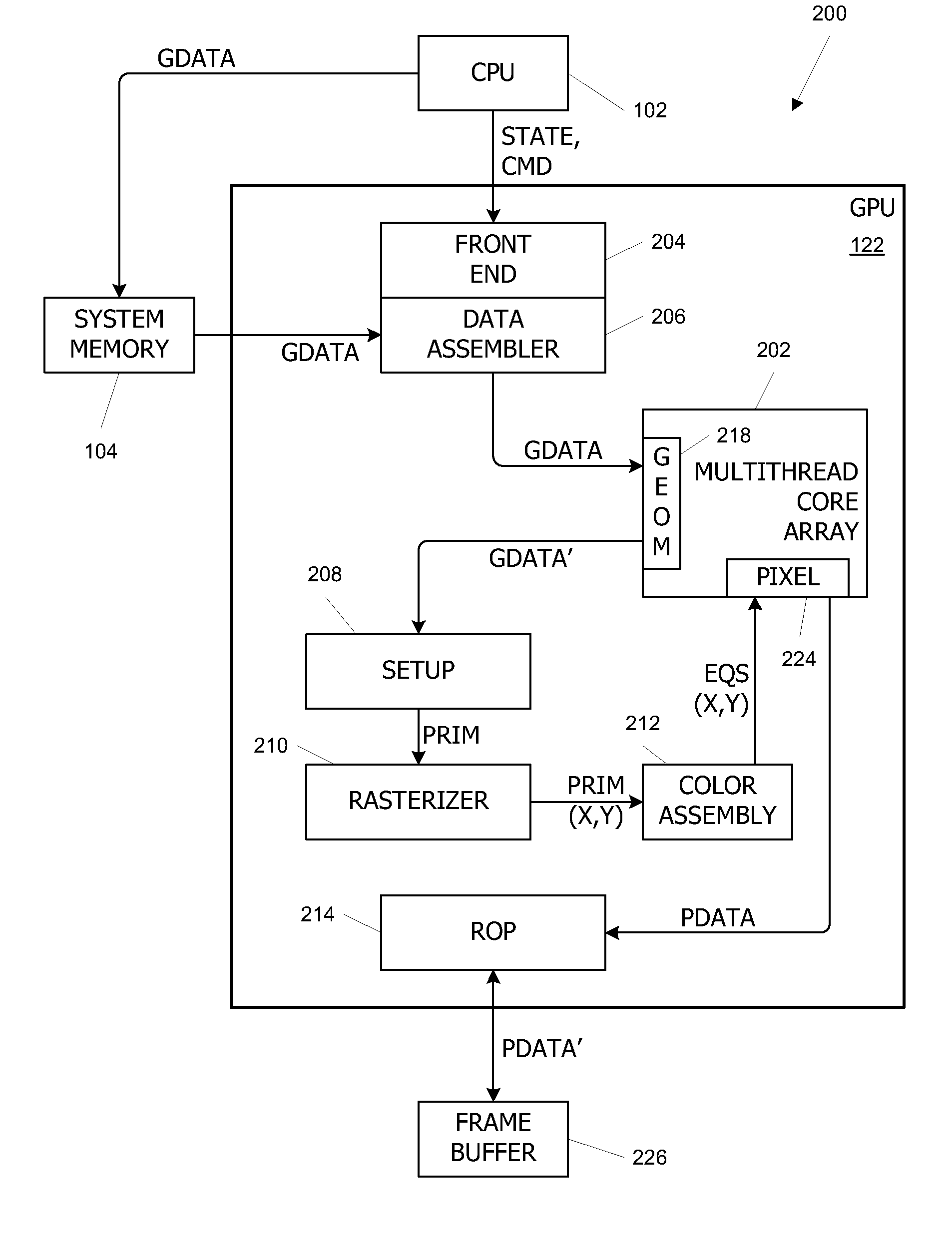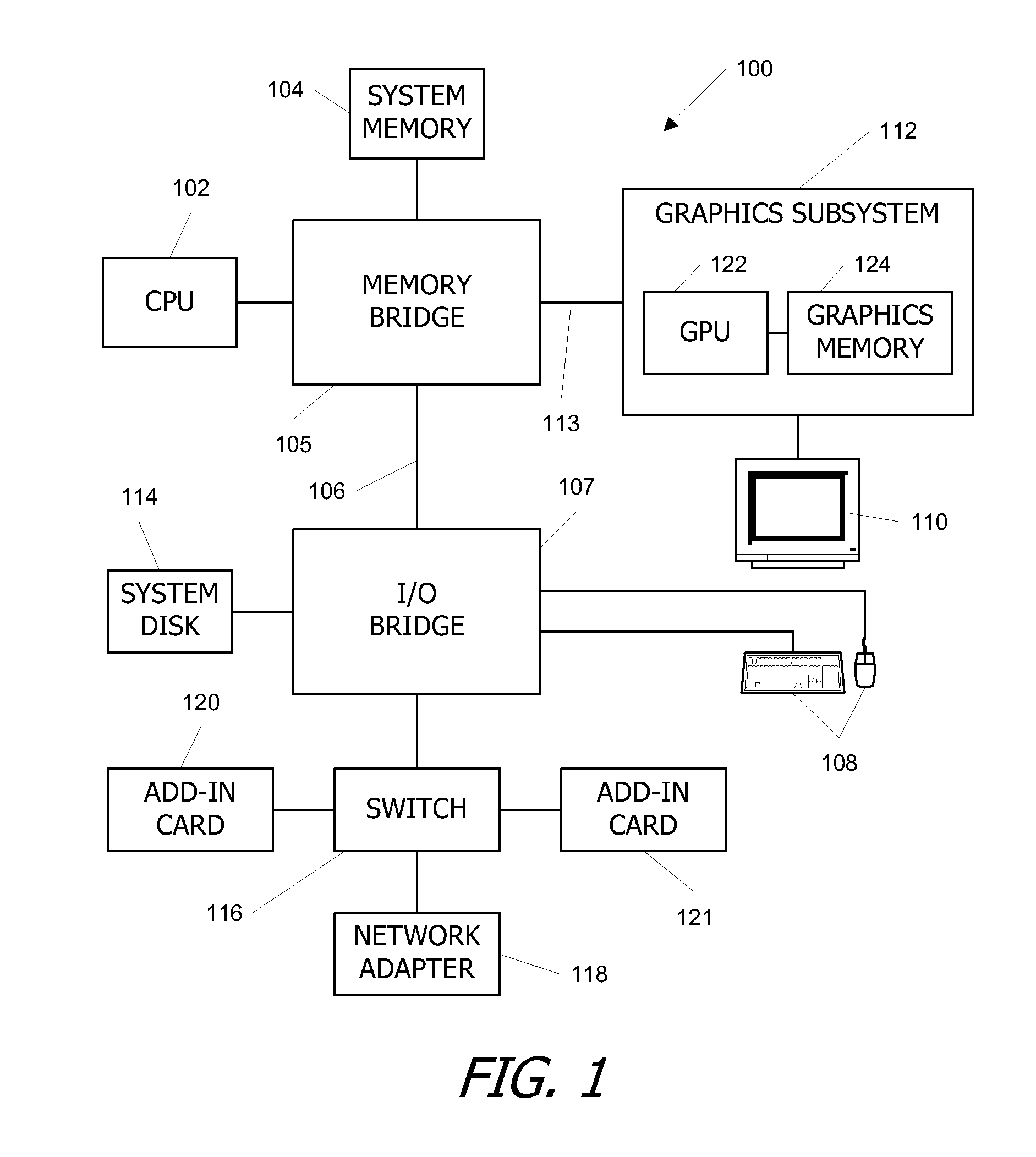Parallel Array Architecture for a Graphics Processor
a graphics processor and parallel array technology, applied in the field of parallel array architecture for graphics processors, can solve the problems of increasing the load on the vertex shader core, reducing the memory locality, and reducing the efficiency of the graphics processing
- Summary
- Abstract
- Description
- Claims
- Application Information
AI Technical Summary
Benefits of technology
Problems solved by technology
Method used
Image
Examples
Embodiment Construction
System Overview
[0019]FIG. 1 is a block diagram of a computer system 100 according to an embodiment of the present invention. Computer system 100 includes a central processing unit (CPU) 102 and a system memory 104 communicating via a bus path that includes a memory bridge 105. Memory bridge 105 is connected via a bus path 106 to an I / O (input / output) bridge 107. I / O bridge 107 receives user input from one or more user input devices 108 (e.g., keyboard, mouse) and forwards the input to CPU 102 via bus 106 and memory bridge 105. Visual output is provided on a pixel based display device 110 (e.g., a conventional CRT or LCD based monitor) operating under control of a graphics subsystem 112 coupled to memory bridge 105 via a bus 113. A system disk 114 is also connected to I / O bridge 107. A switch 116 provides connections between I / O bridge 107 and other components such as a network adapter 118 and various add-in cards 120, 121. Other components (not explicitly shown), including USB or ...
PUM
 Login to View More
Login to View More Abstract
Description
Claims
Application Information
 Login to View More
Login to View More - R&D
- Intellectual Property
- Life Sciences
- Materials
- Tech Scout
- Unparalleled Data Quality
- Higher Quality Content
- 60% Fewer Hallucinations
Browse by: Latest US Patents, China's latest patents, Technical Efficacy Thesaurus, Application Domain, Technology Topic, Popular Technical Reports.
© 2025 PatSnap. All rights reserved.Legal|Privacy policy|Modern Slavery Act Transparency Statement|Sitemap|About US| Contact US: help@patsnap.com



